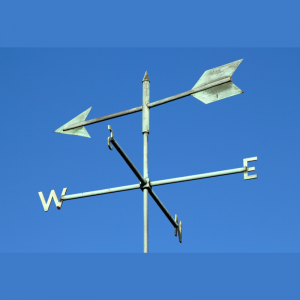“When normal blood circulation is restored, in a majority of cases, the body spontaneously heals itself in an elegant manner with few side effects.”
—Edward Neal, MD, Neijing Scholar
Founding principal in Chinese medicine
“He who is able to reason will see that this great river of life must be tapped and the withering field irrigated at once, or the harvest of health be forever lost.”
—Dr. Andrew Taylor Still
Founder of Osteopathic Medicine

A personal story: I have spent the last quarter-century in the field of massage and bodywork as a therapist, educator, and avid lifelong learner, with particular interest in the principals of Chinese medicine, Osteopathy, and the fascinating current research in the realm of fascia. Although it may not seem so at first glance, because of differences in time, place, and language, there are many areas in which the concepts of East and West fit together quite seamlessly. I have called my particular combination of bodywork modalities “Acucraniatsu” for my love of combining Acupressure, Craniosacral Therapy, and Shiatsu. Many years ago, I was attending a lecture by a prominent researcher in the field of energy medicine. She had about 20 minutes to talk about all the projects she was involved in at the time, and it was all gently sailing over my head when she put up a slide that simply said – “Blood follows Qi.” I was immediately struck by the similarity of concepts – that I could take this fundamental axiom of Chinese medicine and transform it into the language of Craniosacral Biodynamics – “The energy dynamics drive the fluid dynamics of the body.” Both paradigms, from very different times and places, use the term “Breath of Life” to describe the energy that animates the material world in general, and the internal functions of the body in particular. Since then, I have been looking at all bodywork modalities and their underlying conceptual framework in terms of their similarities rather than their differences.
There are some very interesting books and research articles in recent years that are taking an East/West perspective, relating acupuncture channels to embryological development – intelligent lines of form that create and maintain the form of the body (Muscles and Meridians, Phillip Beach, DO, LAc, The Spark in the Machine, Dr. Daniel Keown, MB, ChB, LAc), and from the fascial research side, Acupuncture as a Fascia Oriented Therapy, Dominik Irnich and Johannes Fleckenstein (part of a compilation of research papers from the 2012 Fascia Research Congress titled – Fascia: The Tensional Network of the Human Body), just to name a very few.
Finally, we should always acknowledge the North and South. The global South includes thousands of years of Ayurvedic tradition, and the indigenous medicine of Africa, South America, and virtually every corner of the world has much to offer to the conversation about bodywork, health, and wellness. From a massage and bodywork perspective, I can take any major modality, like Shiatsu from the Eastern perspective or Structural Integration from the Western perspective, stand firm on that one foundational leg, and do just fine for a lifetime of work. But, if I were to explore and get more “legs” under me, it would expand my possibilities and my understanding of how we have worked globally to bring about human health and wellness – and by learning and acknowledging the similarities of many different paradigms, we just might take a small step toward bringing the world closer together for all of our common good.
Carl Johns
Faculty, ASIS Massage Education